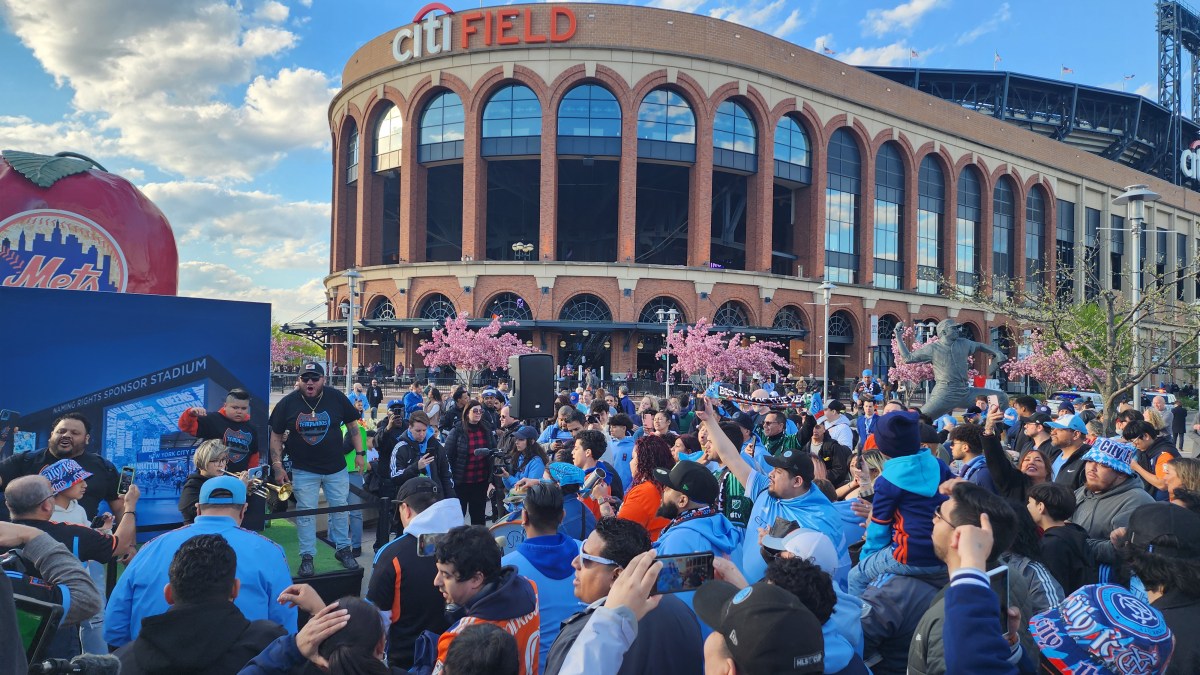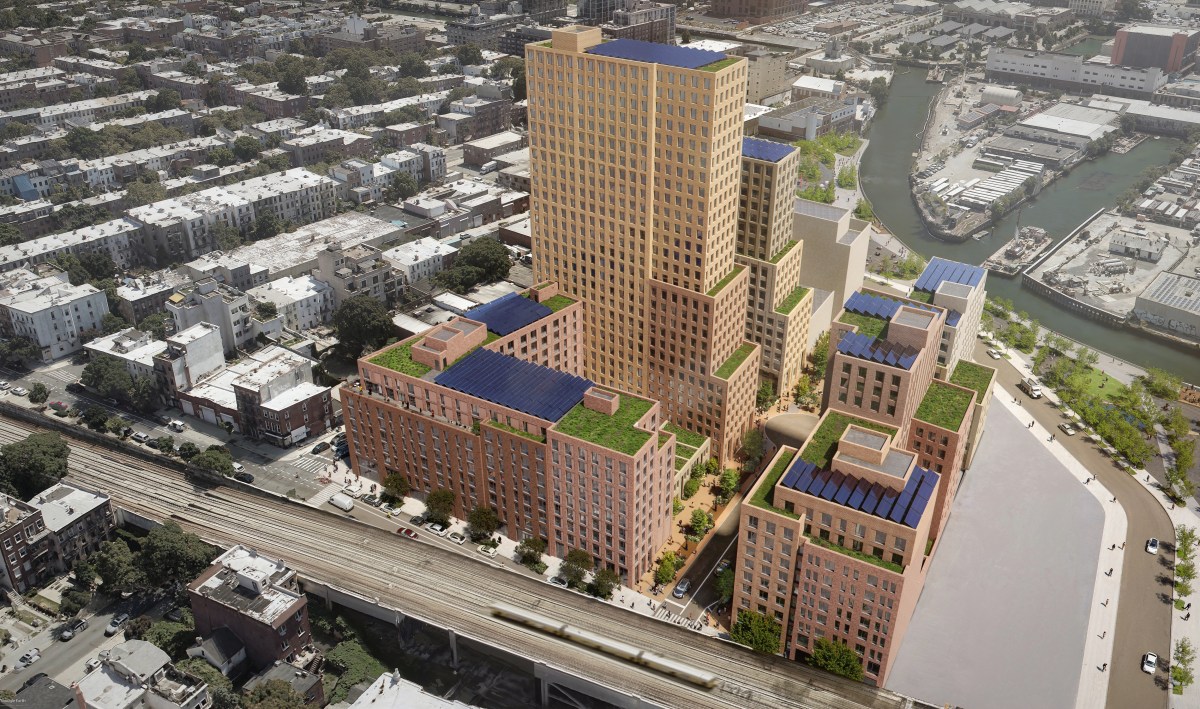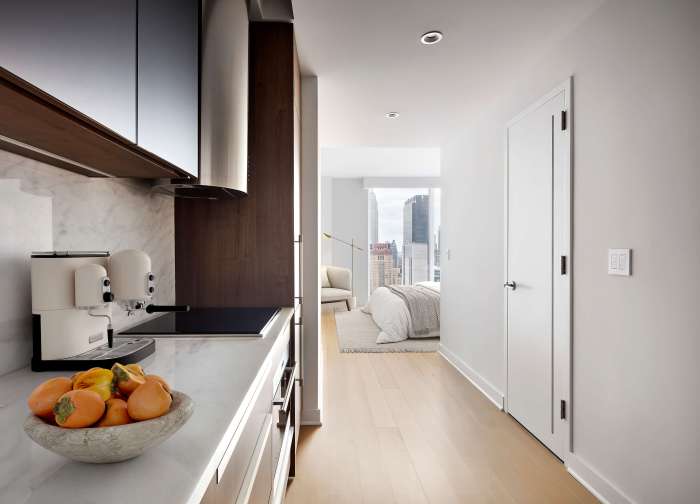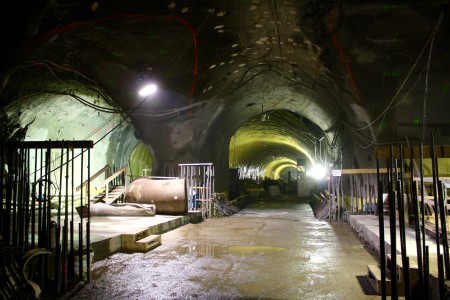
BY YANNIC RACK | Trains from Long Island will start rolling into Grand Central Terminal within the next seven years, according to the MTA’s chief engineer in charge of the monumental East Side Access project.
“We plan to complete the construction by 2020,” Dr. Michael Horodniceanu, the authority’s president of capital construction, said this week during a tour of the new eight-track Long Island Rail Road (LIRR) station that is currently being built below the terminal.
“However, we allow ourselves two years of contingency because this is such a complex project that things can happen,” he quickly added, citing the official December 2022 deadline for the project.
Indeed, things have already happened: East Side Access, which the MTA touts as the largest mass transit project in the country, has been pushed back multiple times beyond its original opening date of 2009.
Back then, the cost was estimated to be $4.3 billion, but the price tag has since swelled to the current estimate of $10.178 billion.
“Like anything else, when you build something this complicated, you’re always going to have to deal with issues,” Horodniceanu said, blaming the cost overruns on unrealistic budgeting by the MTA.
“No longer so, we’re now on budget and we’ll stay on budget,” he declared.

Other MTA capital projects have also come under fire in recent years for running over time and budget, including the recently opened 7 subway extension at 34 St.-Hudson Yards and the Second Avenue Subway, whose second-phase funding the authority just slashed by $1 billion (see story on page 12).
Horodniceanu said work on the East Side Access project, which started construction in Manhattan and Queens in 2006, is now around 60 percent complete.
It is the first expansion of the LIRR in more than 100 years and will transport passengers from Queens and Long Island directly into Grand Central.
LIRR trains currently only run into Penn Station (and Atlantic Terminal in Brooklyn), and the new link is supposed to reduce crowding there as well as on the subway lines that serve the West Side.
“The goal is to allow 160,000 passengers to come directly to their destination on the East Side, and save 30 to 40 minutes of their commute every day,” Horodniceanu said.
So far, the new tunnels are only used to transport excavated rock and other material north from Grand Central and then east through the 63rd Street Tunnel below the East River, to end up at the Sunnyside rail yard in Queens. But in a few years, LIRR trains will make the same trip and back, 24 hours a day.
The 63rd Street Tunnel itself was completed in 1989, but only its two upper floors were put into operation for the subway system. The two lower levels were always destined for LIRR use but have been sitting idle for more than 25 years — the MTA actually had to spruce them up and free them of asbestos and signs of decay.

“From the day [the tunnel] was planned in the ‘60s, it was planned to have a lower level for Long Island Rail Road, so this goes all the way back,” Horodniceanu said.
To complete the connection, the MTA has over the last eight years bored and lined 6.1 miles of tunnels in Manhattan and 2 miles in Queens, excavating more than two million cubic yards of rock and dirt in the process.
The two tracks now emerging from underneath the East River eventually converge in two caverns below Grand Central, roughly along Park Avenue between 42nd and 50th Streets, where they form an eight-track terminal that will be accessible on two platform levels divided by a planned mezzanine.
To get to it, passengers will use a network of escalators descending from a brand new 350,00-square-foot concourse that will include 25,000 square feet of retail space (by comparison, the current Grand Central Terminal encompasses 2 million square feet and 150,000 square feet of retail).
Where the concourse will be, trains from Metro North were stored until recently — and right now, the area mostly still looks and feels like a cave.

Now that the caverns and tunnels in Manhattan have all been excavated, workers still need to actually build the station and tracks within them, including train signals, electricity, and other communications infrastructure.
In Queens, four tunnels have also been dug and lined with concrete, and new switches and bridges are being built at the Sunnyside rail yard, while workers are also laying new track to connect the existing network to the 63rd Street Tunnel.
Horodniceanu said that the scope of the project was a challenge in itself, but was exacerbated by the MTA’s desire to limit street-level disruption.
“The point is, if you do massive underground transportation connections in a densely populated city — if you look at the Upper East Side, 100,000 residents per square mile — you can’t get away without doing it in such a way that you minimize the impact on the people,” he said. “There is a trade-off there. Way back they used to dig a trench, they didn’t care. You can see the pictures in my office, of when they built the Broadway line from Columbus Circle up. They just dug up both sides, there was no access to anything. This is not how we do the job today.”
The work also had to be done at an unusual depth — the lowest tracks run about 150 feet below street level — because the MTA wanted to build on its own property below Grand Central and Park Avenue, rather than acquiring additional property.
“As a result, eminent domain was not needed to do it,” Horodniceanu said.
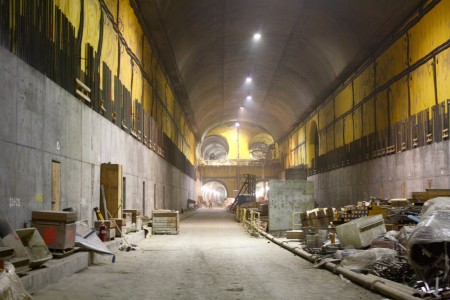
In addition to the tunneling, new train yards and maintenance facilities are also being built in Queens and also the Bronx, and modernized vent facilities — some of which have already been completed — are required along the entire length of the new tracks.
Most challenging of all, according to Horodniceanu, a lot of work has to be done at the crowded Harold Interlocking in Queens — the country’s busiest rail junction (part of the Sunnyside rail yard), where the new tunnels have to snake their way below existing Amtrak, LIRR, and New Jersey Transit tracks.
“What we’re doing in Queens is incredibly complex,” he said. “We’re allowing the railroads there to operate absolutely while we’re building — that’s like changing the wheels when you’re in the Tour de France and you still have to ride the bike” at the same time.
With almost 80 percent of construction funds already committed, Horodniceanu said he’s confident the money allocated for East Side Access in the MTA’s latest five-year capital plan was enough to get the project done —–and he plans to be there for the opening.
“We are ready to continue,” he said. “Overall, I believe we have made a lot of progress in the last three years. We’ll get there.”
Contact Yannic Rack at Yannic.Rack@gmail.com.











